Pacific Electric’s Revolutionary PCCs
By Ralph Cantos
The order for 30 double-end, multiple-unit PCCs was placed with the Pullman Standard Company in February 1940, with the cars being delivered during the month of October 1940. The first 17 cars were placed in service during the month of November 1940 on the Glendale-Burbank Line. The next 13 cars delivered were placed in service on the very busy Venice Short Line.
In preparation for the PCCs’ service on the Burbank Line, the entire roadbed on the private right of way portions of the line was rebuilt from one end of the line to the other.
By 1940, it was common knowledge that ride quality of PCCs could be “temperamental” on open right of way track depending on the condition of the roadbed.
However, no such roadbed rejuvenation was to take place on the Venice Short Line. The tenure of the 13 PCCs on the VSL was brief, just about 3 months. At first, the front trolley pole would bounce out of the hold down hook, necessitating the trolley pole rope to be wrapped around the headlight, so the pole would not cause any damage if it came out of the hold-down hook. The big 950s and 1000s and Hollywood cars were not affected by the rough track.
And so, all 30 of the PCCs would spend their life as fixtures of the Glendale-Burbank line. When the Burbank line was abandoned on June 19, 1955, the cars were stored in the Subway Terminal for 3 years where several cars near the portal were vandalized by sick low-lifes that had nothing better to do than to trash the cars.
In September 1959, all 30 cars were sold to transit operations in Buenos Aires. There, the cars were modified somewhat with “train doors” being cut into both ends of some cars, and just one door cut into a “lead car.” In this way, one conductor could handle trains of 4 and 5 cars. But the end of the most beautiful PCCs ever built came just 3 years after going into service, as the line they operated on was abandoned. None of the cars is known to have survived.
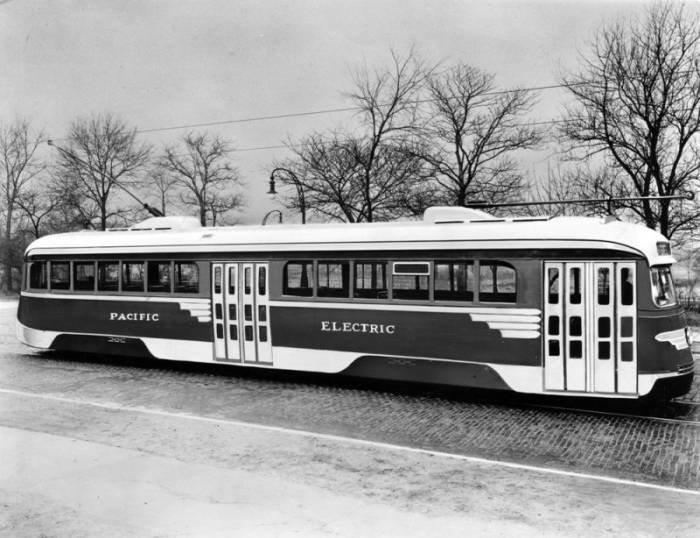
This is a rendering of what the cars were going to like. This is a heavily retched photo of a prewar St. Louis Car Co. PCC.
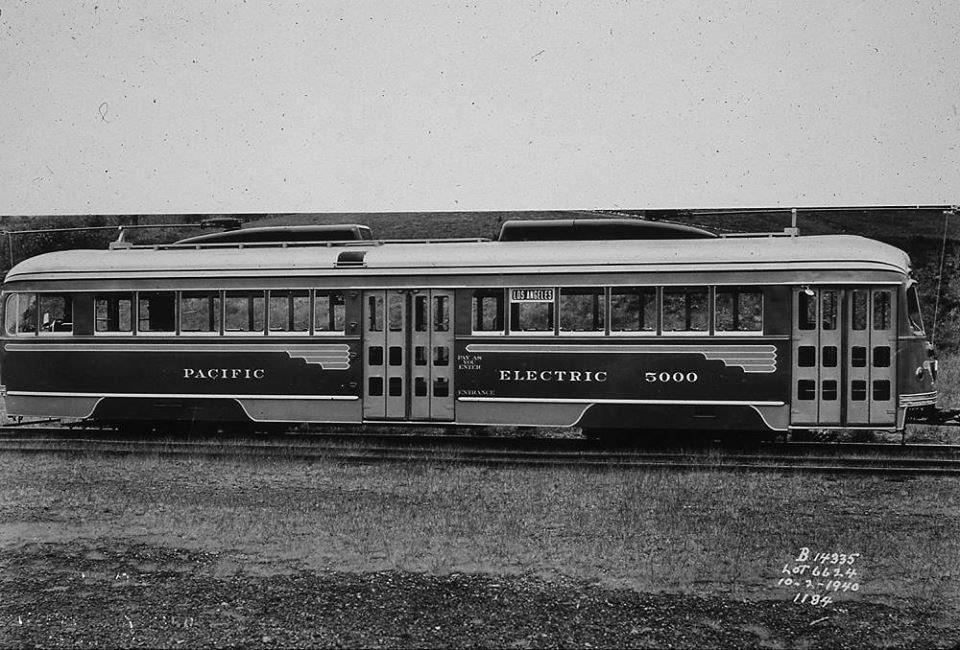
PE 5000 at the Pullman Standard Factory locked and loaded ready for shipment to Los Angeles November 1, 1940.
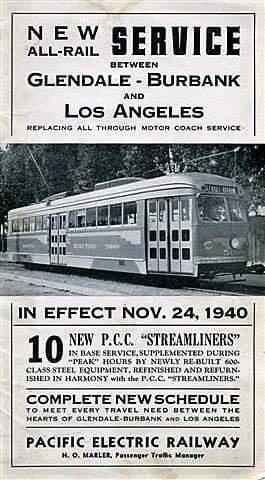
A fold out leaflet announcing the new ultra modern PCCs for the Glendale-Burbank line.
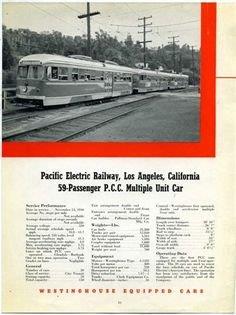
The Westinghouse Company who supplied parts for the cars was very proud of them and placed full-page ad in transit industry publications.
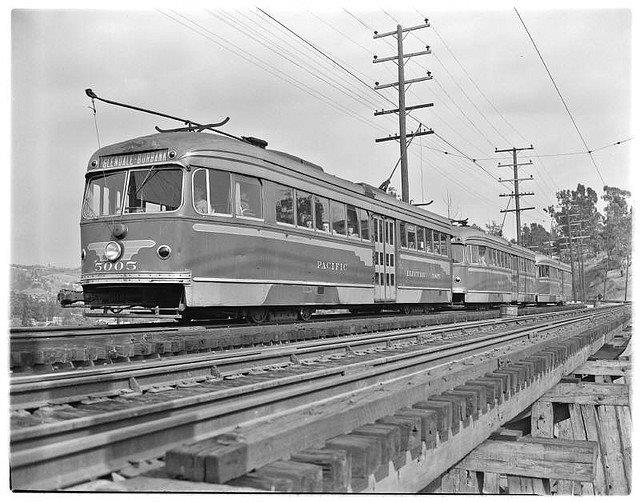
A PE publicity photo taken at the Fletcher Drive trestle taken just after the cars went into service.
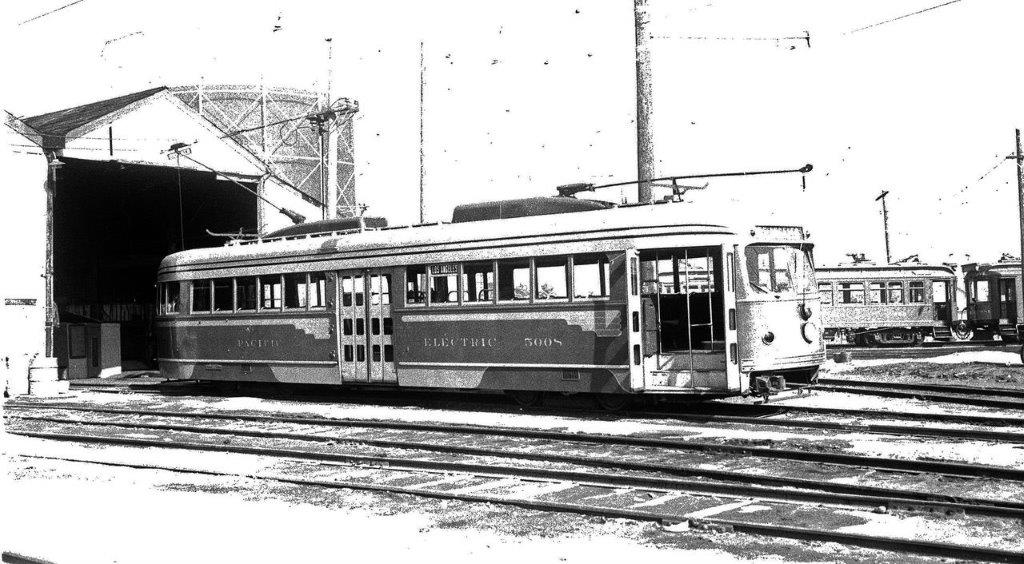
A very rare photo of 5008 taken at the Ocean Park Car House in February 1941.
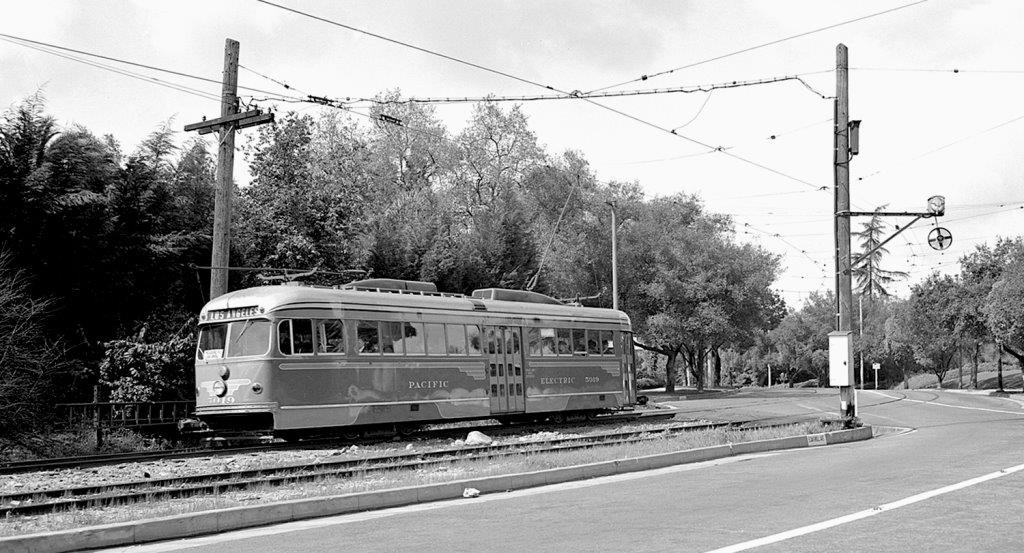
Another very rare photo of PE 5019 on the Pasadena-Oak Knoll Line near the Huntington Hotel. Again. the PCCs could not deal with the rough track. So any hope of a PE PCC operating on the Northern Distract was put to rest.
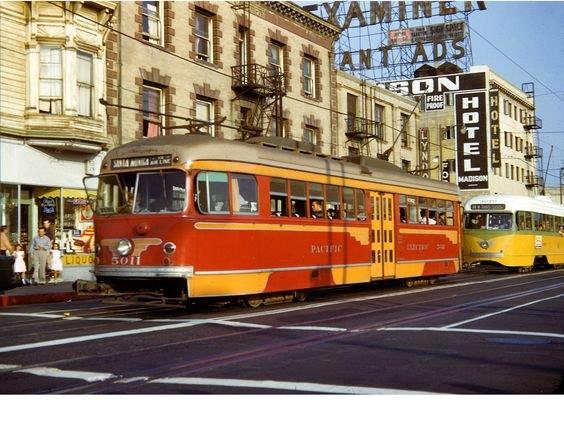
This remarkable photo was taken during a fan trip operated on October 12, 1952. The photo is on 7th Street between San Pedro and Main Streets. The PE maintained track on 7th for movements of cars into the 7th Street Surface Yard and back out onto Main Street. This was the only place in the world such a photo could be taken. Here we see 2 PCCs of different manufacturers, 2 different gauges and 2 different railway companies. Only 2 other American cities operated 2 different PCC rail systems, they being the Shaker Heights Rapid Transit System and the Cleveland Transit System in Ohio and the Illinois Terminal Railroad and the St. Louis Public Service. The PCCs of these 2 systems operated in different parts of both cities.
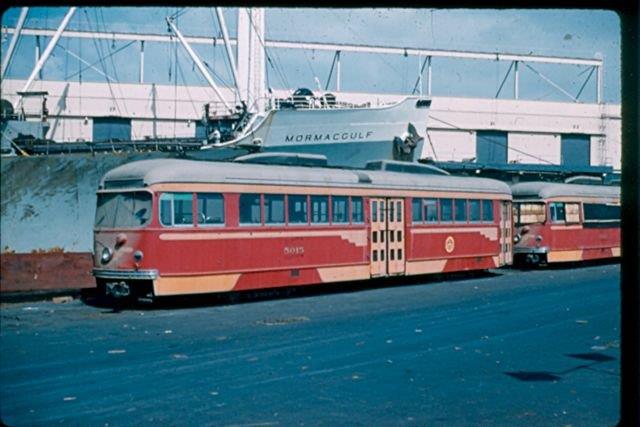
PE 5009 at the LA Harbor waits its turn to be loaded on a freighter headed for South America. The 5009 was not damage while in storage. She was still a beautiful sight to behold.
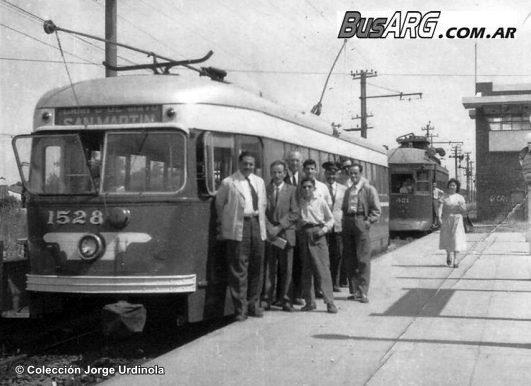
The former PE 5028, now numbered 1528 poses with railway officials just after going into service, The 1528 was the only PE PCC that was not "butchered" with train doors cut into them. She remained a double ender to the end.
Recent Posts
Comments





Thank you for keeping this information alive! My grandfather was a motorman in Boston and my dad and I took the last of the Red Cars before they were changed over. I grew up in La Crescenta and my mother’s family was from Pasadena (her father was the city engineer for Pasadena). So the Sierra Madre Blvd. route was reminiscent for me as well as some of the coastal lines. Perhaps if I have enough time in the next couple years I’d like to re-create some models of Red Cars for my grand son.
I imagine that the men and women who operated the PE Transportations thought of them as the “Clean Energy” of that era.